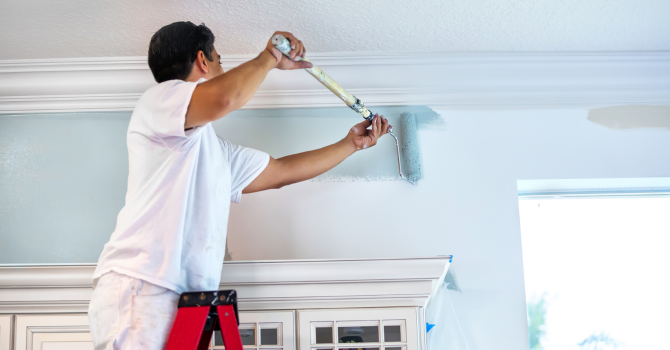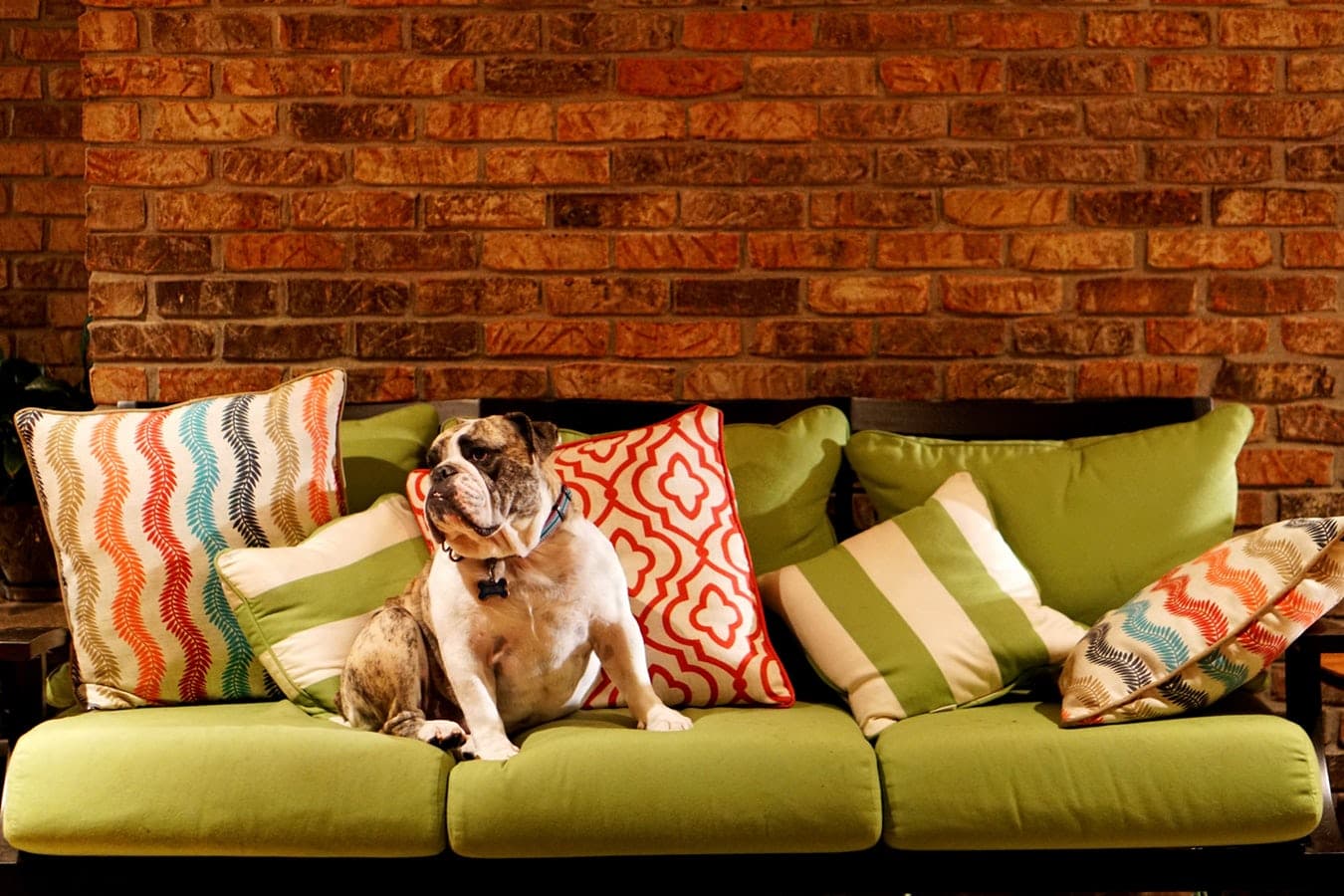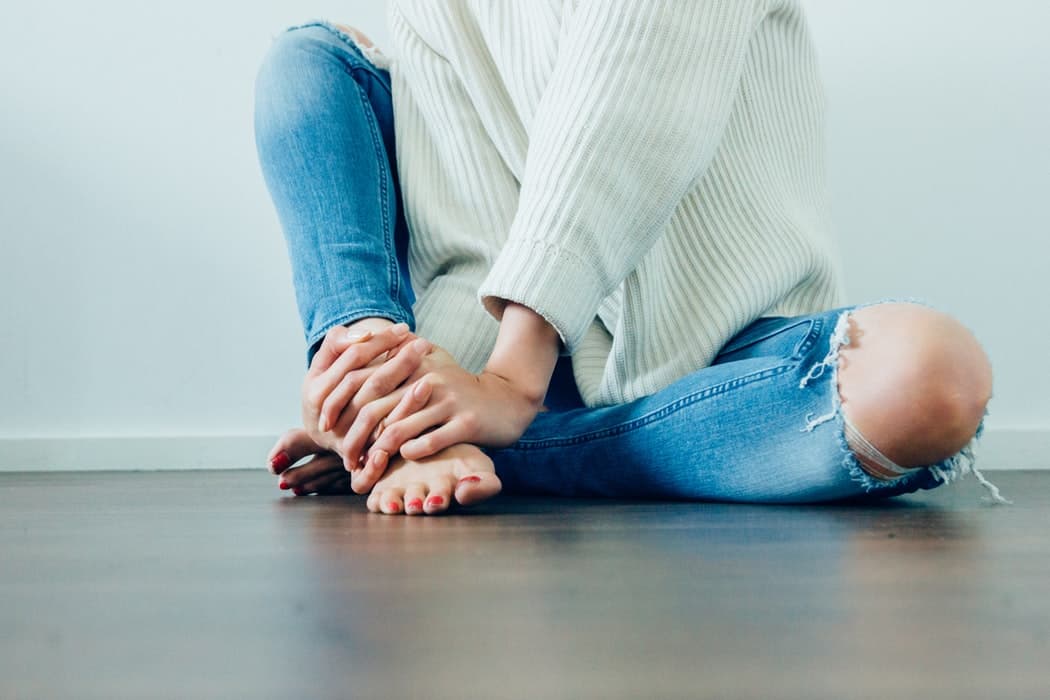Are you looking for a contractor?
Submit our quick form and get quotes now!

Whether it’s on a floor, wall, or directly on to-be-installed ceramic tiles, painting ceramic tiles is a relatively simple task. This process can be summed up in three steps: clean, sand, and paint.
If you don’t wish to repeat this process soon thereafter and hope the result lasts a while, it’s best to take your time and carry out each step according to specifications.
Painting Ceramic Tiles

Source: Canva
First off, you’ll need a ceramic primer and paint. Independent retailers and department stores carry a variety of ceramic tile painting products, and some will recommend kitchen and bathroom paint, while others will suggest furniture and cabinet paint.
Keep in mind that paint has to be room-specific, otherwise, you risk having to repeat the process much earlier than intended.
Painting a tiled wall near a water-prone area or a room in which the humidity levels are elevated can make the paint peel shortly thereafter.
If you decide on painting a tiled countertop, it’s imperative to ensure that the latter is resistant to potential sources of heat, like a warm pot or pan. Furthermore, the tiles could be vulnerable to scratches when in contact with knife blades or other utensils.
You’ll also need to exercise good judgment when it comes to the state of the surface-to-be-painted: If it’s too damaged, it’s best repaired entirely. And that way, you can pick the colour you want right away, thus avoiding having to paint the tiles afterwards.
How to Paint Your Ceramic Tiles
Prior to laying your ceramic tiles, you may choose to change the colour of your bathroom altogether. If you want to lay tiles on walls that match that of the painted walls, you can opt for a quick and cheap solution: repaint the to-be-installed tiles.
To paint your ceramic tiles, you’ll need protective gloves, heavy-duty cleaner (TSP - trisodium phosphate), rag, medium grit sandpaper, primer, foam paint roll, paint, and varnish (should you want to varnish the tiles as a last step). Note that some primers and paints are water- or oil-based. Avoid layering a water-based product onto an oil-based one.
A ceramic bathroom floor requires a few more pointers—ensure that you consult our article to know exactly how to renovate a ceramic bathroom floor.
Follow the steps detailed below:
Thoroughly clean the tiles with a cleaner;
Dry the tiles;
Sand with the palm of the hand for an even surface;
Dust tiles;
Spread primer with a roller;
Wait until the primer dries;
Apply colour.
Repainting the tiles is a quick and easy method, however, the less durable one long term. Note that ceramic floors tend to wear and scratch more easily compared to walls.
How to Paint a Ceramic Kitchen Backsplash

Source: Canva
After several years, chances are that you may want to change the look of your old tiled backsplash to give it a colour that better fits the rest of the décor. To paint your kitchen backsplash, you can use the following tools/products:
Protective mask;
All-purpose cleaner;
Rag;
Sander with 400- or 600-grit sandpaper;
Primer;
Synthetic silk paintbrush;
Vacuum;
Furniture or cabinet paint.
Follow the steps detailed below:
Wear a protective mask;
Thoroughly clean the surfaces with an all-purpose cleaner that won’t leave any residue behind;
There should be no traces of dust, dirt, or mould left behind;
Rinse and dry the surfaces thoroughly;
Sand with 150-grit paper, light and even sanding will suffice;
Wipe the surfaces with a damp rag;
Apply a coat of primer with a synthetic silk paintbrush;
Allow that coat to dry for 3 hours;
Lightly sand the dry coat of primer with 220-grit sandpaper;
Vacuum up the dust and wipe all surfaces with a damp rag;
Apply two coats of furniture and cabinet paint;
Wait 5 hours between the two coats.
The above-detailed process gives your ceramic kitchen backsplash hard-wearing quality when exposed to repeated cleanings, spots, and scratches.
What are some tile painting tips?

Source: Canva
Kitchen and bathroom ceramic tiles may need to be redone after quite some time. You can always decide to paint them, however, beware! Adding a coat of paint won’t fix any damage. If some of the tiles need a little repair prior to receiving a coat of paint, make sure to do so beforehand. Note that flooring tiles require more heavy-duty paint than wall tiles would need since floors are constantly exposed to more friction. Polyurethane paint is quite resistant.
If you wish to proceed in an eco-friendly way, clean the tiles with an all-purpose cleaner to remove all lime stains and white vinegar then rinse the whole with clean water. Once the surface is dry, you can degrease it with an acetone-soaked sponge. Cover all surfaces you don’t wish to paint with adhesive tape.
Then, you can apply a primer on the outer edges of every tile. Once the primer is dry, you can start painting while still ensuring to paint in crisscross strokes for an even-looking result.
Don’t wait until the paint has dried completely before removing the adhesive tape to prevent the paint from chipping, and apply touch-ups where needed.
Looking to get a ballpark cost for your next paint renovation project? Try out our cost calculator!
Get 3 quotes for your ceramic tile painting project
RenoQuotes.com can help you get quotes for your painting project. By submitting your project, we’ll put you in contact with top-rated contractors. Fill in the form on the homepage (it only takes a few minutes), and you will get estimates from trusted professionals.
Dial 1-844 828-1588 to speak with one of our customer service representatives.
Looking for something else?
Table of contents
4 min read
Get 3 free quotes for your project!
Submit a project and get 3 free quotes!
Are you a contractor?
Join our network and receive real leads!
Download the price guide for renovations
We’ll be emailing you the latest market price guide for renovations.
Related articles
The latest industry news, interviews, technologies, and resources.

Editorial Team
•25 Oct 2024
Not everyone is fortunate enough to have a big, spacious kitchen. Whether you’re renting your home or yours simply happens to be modest in size, chances are, you’re running out of room to be truly creative with your space.

Editorial Team
•07 Nov 2023
Need a bit of advice on how to get started on your house painting project? We met with Antoine LeBouc, one of our painting contractors, to give out a few of his best tips. To check out the video (in French with English subtitles), click here!

Editorial Team
•07 Nov 2023
When we purchase our first home, everything seems perfect. Of course, over time you live there, grow your family and build a cocoon to call your own. Over the years, your home evolves with you, and while it may be subtle, it can age quickly.

Amanda Harvey
•31 Oct 2024
Unanticipated noises in the wrong place at the wrong time can be jarring, stressful, and annoying. The best way to deal with it is soundproofing at the source.

Karine Dutemple
•07 Nov 2023
A lot of homeowners still opt for the application of oil on their floor, whether it’s in the kitchen, the bedroom or the living room. Given its ability to bring out the grain of the wood and to let is natural charm shine trough, an oiled floor is certainly a must.